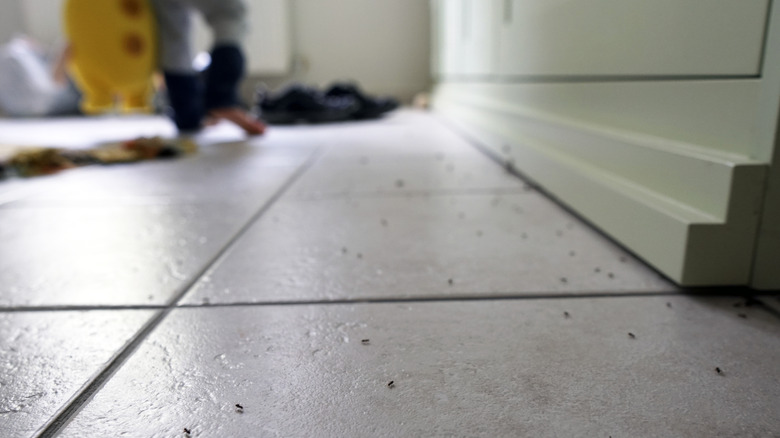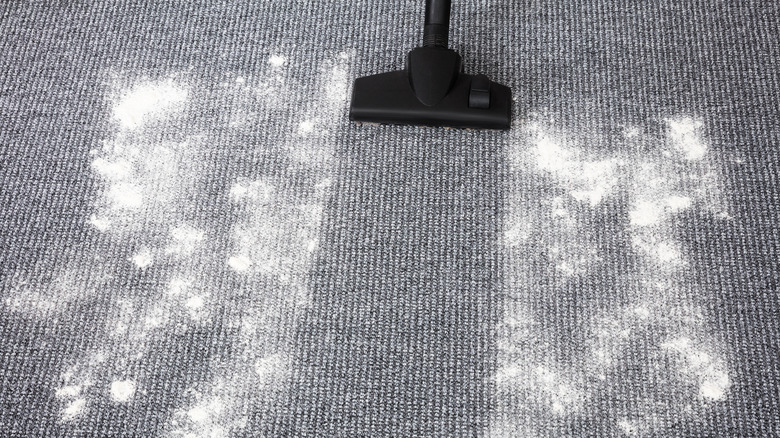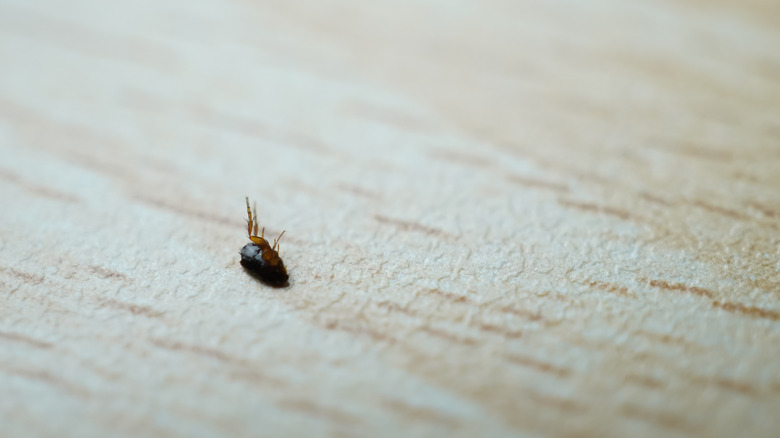The Budget-Friendly Hack That Claims To Get Rid Of Fleas - But Does It Work?
Fleas are tiny, fast-moving insects that multiply quickly and become an annoying — and itchy — problem if they take up residence in your home. These little parasites feed on human and animal blood, and their bites can cause skin irritations, trigger allergic reactions, and even transmit diseases. Some claim that using salt is an effective remedy for wiping out these miniature menaces, but does this hack actually work? While the science behind it validates that salt can kill fleas, it's probably not as impactful as some users claim. If you're hoping to rely solely on this method to rid yourself of these persistent pests, you may want to reconsider.
Salt is inexpensive, non-toxic, and likely already sitting in your kitchen cabinet, so it may seem like a budget-friendly and natural way to treat infested areas — just one of many genius ways to use salt around the house. However, while salt may be effective at killing some fleas, it's unlikely to wipe out an entire infestation all on its own. Here's how the salt hack works for budget-friendly flea removal, some of the drawbacks of this method, and tips to try for more effective results.
Sprinkled salt can wipe out some fleas
To try the salt method for killing fleas, finely ground salt is most effective as it can better penetrate small crevices. If you only have coarse salt on hand, toss it in a blender until it's ground into a fine powder. Sprinkle the salt anywhere fleas may be lurking, especially in textured surfaces such as rugs, carpets, upholstered furniture, pet beds, and in cracks between wood floorboards. Use a carpet or upholstery brush to work the salt in, making sure it gets between the carpet fibers and into all the nooks and crannies. It's a good idea to wear a mask during the application to avoid breathing in the salt dust.
Allow the salt to sit for 12 to 48 hours, during which time it will kill any fleas it encounters. The reason this works is because salt is naturally absorbent and abrasive. When fleas walk through the salt, it damages their exoskeleton, which dehydrates and eventually kills them. Once the salt has had enough time to sit on your surfaces, thoroughly vacuum the treated areas to remove the salt and dead fleas. If possible, use a vacuum with a bag that can be disposed of outside your house when you're done to prevent any fugitive fleas from re-entering your home. For a bad infestation, you can repeat the salt treatment a second time.
Drawbacks of using salt to kill fleas
While the salt method can be a useful tool in the fight against fleas, it's unlikely to kill all the eggs and larvae, which are often laid in hidden, hard-to-reach spots where the salt can't penetrate. This is problematic because if any eggs and larvae survive, it's only a matter of time until the infestation starts up again. That said, combining the salt hack with other methods could be worth a try, as it's more affordable than hiring a professional. Because flea eggs and larvae can't survive high heat, you can target them separately by steam-cleaning all carpets, rugs, and furniture, as well as washing pet bedding, human linens, and any clothing that may have been exposed in hot, soapy water.
If you decide to try the salt method, be mindful that it can be messy and tome consuming. It can also be harmful to pets if salt is ingested. Whether you choose a DIY method or opt for professional help, once you've knocked out your flea problem, you'll want to avoid a recurrence. Consider a vet-recommended flea prevention treatment to protect any pets, and reduce the likelihood of fleas entering from outside by keeping your yard well-maintained. You could also try applying an essential oil to keep fleas and ticks off your lawn, or by spraying your yard with Dawn soap — another way to banish fleas using an unexpected cleaning product you probably already own. If you still need something stronger, you could use an insecticide — as long as it's pet safe for any four-legged family members.


